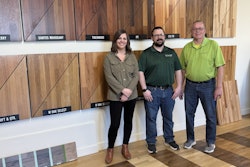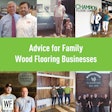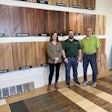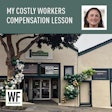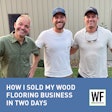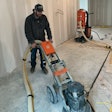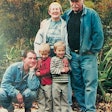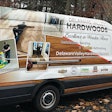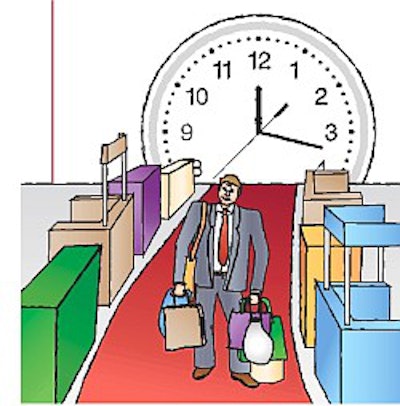
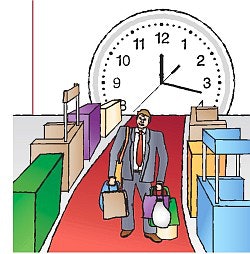
January through May is trade show season in the flooring industry. If you've already been to Surfaces '99 this year, or the National Association of Home Builders show, or the Maple Flooring Manufacturers Association convention,
or even traveled to Germany for the Domotex trade fair, you know how many choices there are to make on the trade show floor, how easy it is to get sidetracked, and — in the end — how little time there is to accomplish your goals. It's not unusual for trade show visitors to return home, laden with useful materials and information, yet with the nagging sense that they could have used their time more wisely.
If you're planning to attend the NWFA Convention or one of the other trade shows remaining on the schedule this spring (see Calendar, p. 142), you need to make sure you get the maximum benefit that a trade show has to offer.
To do that, you need to rehearse. Here, seven trade show experts describe the most common mistakes made by trade show goers — and offer strategies to avoid them.
MISTAKE #1: FORGETTING TO DESIGN AN AGENDA.
Putting off trade show planning until the last minute, then rushing to the show without a plan, is the biggest mistake of all.
"We did research on how the most productive visitors work trade shows," says Stephen A. Sind, president of the Center for Exhibition Industry Research in Bethesda, Md. "Three out of four have predetermined agendas covering who they want to see." Savvy attendees look at show previews, supplements and other material they get in the mail. Put your plan on paper to avoid losing your way when you encounter the commotion of the trade show floor.
"To make the most of your time, you need a written agenda," says Iris Kapustein, president of Trade Show Xpress, a trade show consultancy in DelRay Beach, Fla. "Take a look at the pre-show directory and the floor plan, and chart who you want to see."
Don't allow others to throw you off schedule. "You need to stay very focused and targeted and not get sidetracked," says Kapustein.
Bonus tip: Divide the show floor by the number of hours you have to invest. And schedule the last day for returning to booths you want to see again.
MISTAKE #2: TAKING SLOPPY NOTES.
"Write it down and you'll remember it longer." Whoever came up with that old bromide never talked with a trade show attendee three days after a show.
What a mess the notes are in. Some are on the backs of business cards. Others are scribbled in brochure margins. And some you can't even decipher.
Avoid the problem by planning a system to take notes.
"I tend to use a tape recorder," says Mim Goldberg, president of Marketech, a trade show consulting firm in Westborough, Mass. "It's so convenient and handy. And sometimes my note-taking becomes cryptic, particularly if I am in a rush and visiting a large number of booths. Having everything on tape means I don't leave anything to memory or chance."
Of course, using a tape recorder means you need to transcribe the tape later, or find someone to do it for you. And that highlights the fact that note-taking — like just about everything else dealing with tradeshows — is a highly personal matter.
"Some people are comfortable with a small notebook," says Goldberg. "As they leave each booth they jot down their impressions about key areas." One problem with a notebook is that you often end up jotting down notes while speaking with a booth staffer. This can prove distracting and uncomfortable if you are writing down lots o information. So, says Goldberg, make a point to pause after every booth and fill in the blanks in your notebook with additional information. If you walk too quickly to the next booth, you are bound to forget important information.
Bonus tip: Divide business cards into "high" and "low" priorities. Wrap each category in a rubber band.
MISTAKE #3: NOT STICKING TO YOUR OWN AGENDA.
"Prior to walking into a booth, remind yourself of your agenda and rehearse exactly how you will approach the staffer," suggests Richard J. Brunkan, chairman of Human Resources Development Consulting, a Milwaukee based workplace psychology consulting firm. "Then stick with it."
Be specific about what you want to learn. Avoid asking "What's new." or "Tell me about what you have here." Such open-ended ice-breakers are likely to invite time-consuming conversations.
"Don't be afraid to ask for a person with the expertise you need," suggests Brunkan. Not every person at the booth has the same background. You will be doing both yourself and the staffer a favor by being up-front about who you need to see. Ask "Who else can I speak with about this." They might be relieved to pass you off to someone with more expertise.
Bonus tip: Assess a booth staffer's expertise quickly by asking, "How do your goods compare with the competition? How are they different?"
MISTAKE #4: ATTENDING THE WRONG SEMINARS.
Choose your seminars wisely. The right ones are excellent learning tools, and the information you pick up can make a big difference in your business. Others may be valuable for someone else, but contain little that directly affects your business.
"Too many people attend a seminar because it looks interesting," says Jefferson A. Davis, president of Competitive Edge Training in San Bruno, Calif.
"Be more selective. Ask yourself what specifically about this session you would like to learn. And what would you gain from it? And how does it relate to a job-skill issue?"
Prior to the seminar, write down the three questions you want to have answered, suggests Davis. "Listen for answers to those questions — and if they are not answered, ask."
Bonus tip: If the speaker is giving out a lot of information quickly, jot down critical "keywords," to jog your memory later.
MISTAKE #5: FAILING TO MAXIMIZE YOUR RETURN ON SOCIAL TIME.
Lunch. Cocktail parties. Hospitality suites. Coffee breaks. All are excellent social occasions that sprinkle a tradeshow like sugar on a donut. Yet tradeshow goers make two common mistakes when it comes to these events: The first is avoiding them, under the mistaken impression that they are not business-related. And the second is failing to capitalize on their business potential, treating them simply as social events.
"Social occasions give you the opportunity to meet and converse with individuals who are vital to your business, but who you don't get to see otherwise," says Robert F. Dallmeyer, a trade show consultant in Los Angeles. "It's a mistake to avoid them."
These are great opportunities to obtain information about your competition, or about hidden trends in the market. Remember: Offer information to get information.
Bonus tip: Never dine alone. Arrange for breakfast, lunch and dinner engagements with individuals who can make a difference in your business.
MISTAKE #6: NOT BROADCASTING INFORMATION THROUGHOUT YOUR BUSINESS.
After you return home, don't keep your new wisdom to yourself. Spread it around your place of business.
"You can maximize the results you get from attending the show by sharing information with coworkers back home," says Susan A. Friedman, president of Trade Show Coach in Lake Placid, N.Y. "Communication is the core of teamwork, and teamwork is the core of trade show success."
Making this "knowledge sharing" really work means planning ahead, says Friedman. Prior to attending the show, meet with coworkers who will not be going. Ask each person to give you three questions they would like answered by your show visit. These questions may be in the areas of new services or products, or new technology your business requires to run optimally. Finally, your business may need information about competitors, or about larger marketplace issues that may impact sales and merchandising decisions. "Feedback from others in your business is invaluable in helping you to focus on information you really want to bring home from the show," says Friedman.
Bonus tip: If a trade show contact looks like a good resource for a coworker, jot the coworker's name on the contact's business card to stimulate your memory later.
MISTAKE #7: SCHEDULING YOUR TIME TOO TIGHTLY.
Planning your time is important. But too much of a good thing is counterproductive.
Kapustein suggests planning to see 12 vendors a day at the most. Keeping your schedule from getting too packed will allow you to leave time between appointments. "You may want to get some information from an adjacent booth, but if you have scheduled yourself too tightly you won't be able to."
"Before you walk into the hall, take a look at the catalog you receive when you register," suggests Sind. "You will likely find a selection of new suppliers whom you have not had the opportunity to meet." Many of these suppliers will be new companies —and they can be rich sources of innovative ideas, products and services.
"While you want to take time to see your priority booths first, don't overlook the opportunity to see new and important exhibitors," says Sind.
GET YOUR MONEY'S WORTH
Like any investment, a trade show visit can pay huge dividends for your business, if you've invested your time wisely. Attending a trade show carves a lot of expense out of your balance sheet, and a lot of time out of your schedule. Is it worth it? You bet, if you take the time to plan the hours you spend at the show — and then work your plan.
MAKE YOUR CONVENTION AND TRADE SHOW TRIPS MORE PROFITABLE
• Avoid wasting time standing in line behind other people at a booth. Start the show by going to the most vital booths and asking “May I come back at 2 p.m.?” Jot the appointment time on your card and leave it with the individual at the booth. When you come back you can say with authority, “Oh, excuse me. I have an appointment at 2 p.m. with so and so.” Go right through.
• Anytime you take brochures or other product information, always write on it how interested you are, and what steps you need to take. This will help sort the critical from the clutter, and keep anything from falling through the cracks.
• Save time by avoiding long lines: pre-register, and arrive a half hour early to avoid the crowd at the doors.
• Drink water regularly to avoid dehydration.
• Take a light and comfortable “carry all” for accumulated material. Plastic bags can weigh you down.
For 30 ways to boost your productivity at a trade show, send a self-addressed, stamped envelope for a free copy of “Visiting a Trade Show” from Susan A. Friedman, President, Trade Show Coach, 30 Saranac Ave., Lake Placid, NY 12946. You may also order by fax at 518/523-8755 or by E-mail at [email protected]
















